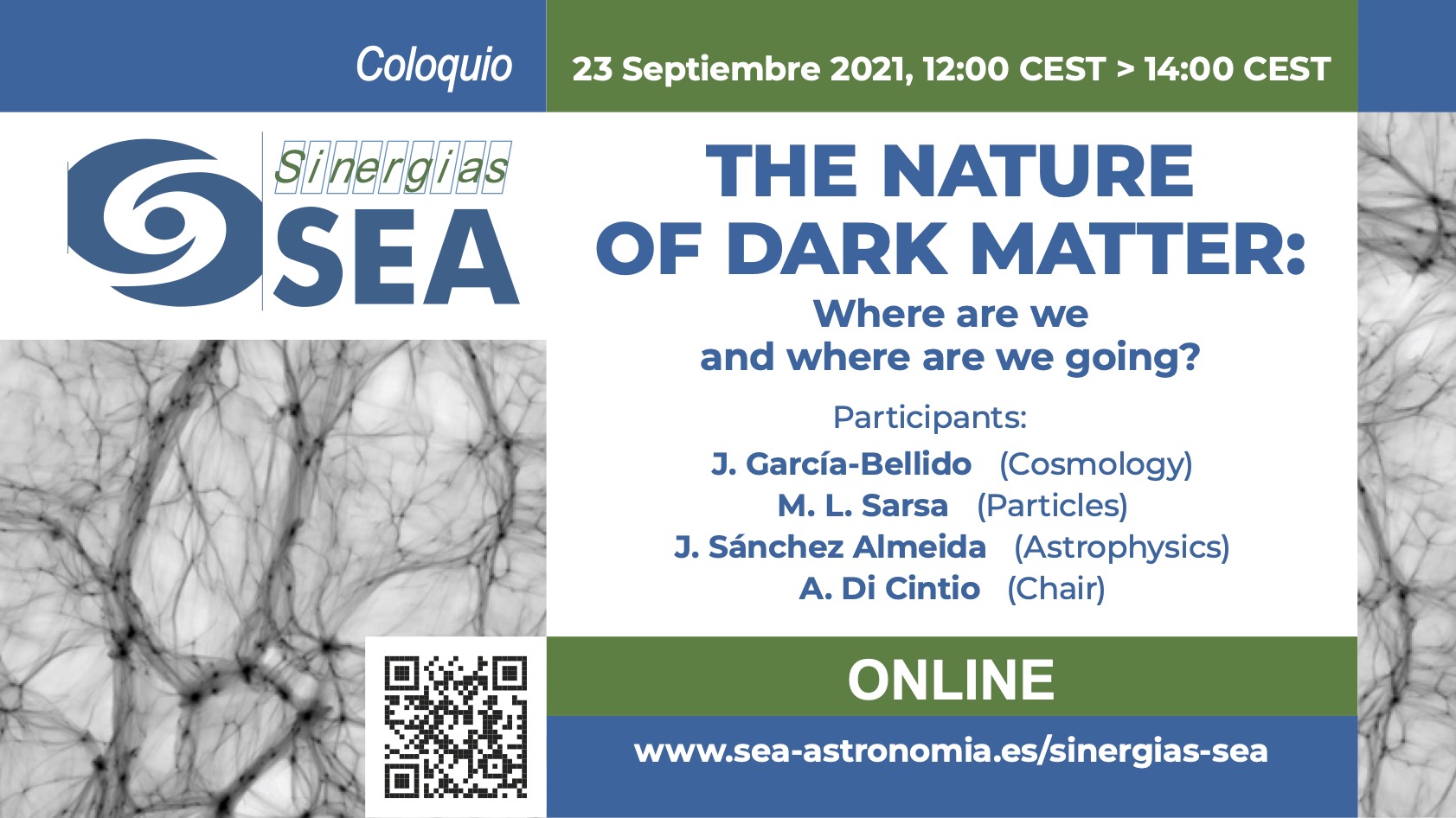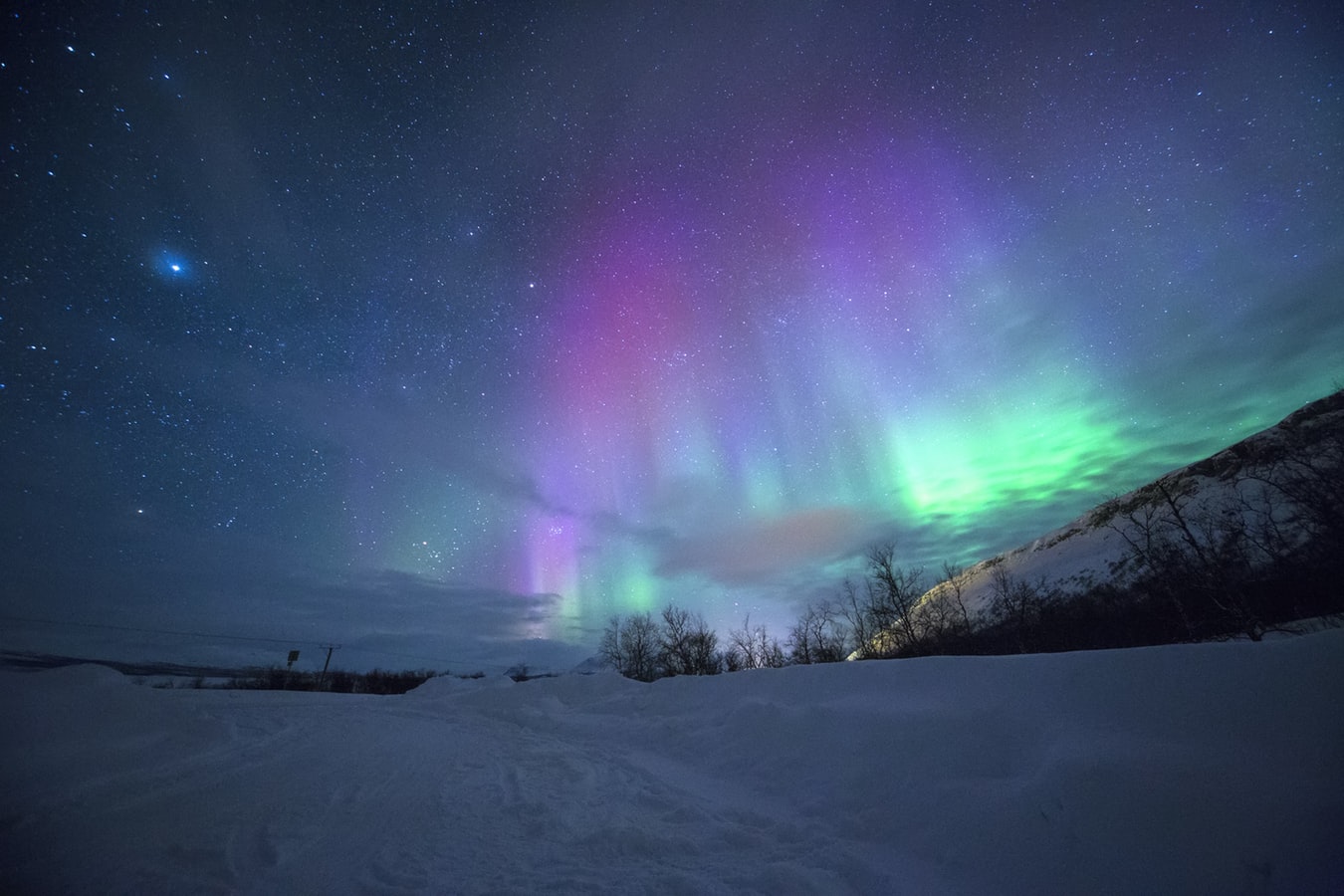SINERGIAS SEA: La naturaleza de la materia oscura: dónde estamos y a dónde vamos / The nature of dark matter: where are we and where are we going?

Duración: 2 horas aproximadamente
VÍDEOS Y PRESENTACIONES:
- - Presentación con Arianna di Cintio - VÍDEO - PDF
- - Astronomía con Jorge Sánchez - VÍDEO - PDF
- - Física de partículas con María Luisa Sarsa - VÍDEO - PDF
- - Cosmología con Juan García-Bellido - VÍDEO - PDF
- - Coloquio - VÍDEO
[ESPAÑOL]
Propósito:
La naturaleza de la materia oscura es sin duda uno de los problemas más importantes de la física actual. Simplemente no sabemos qué es la mayor parte de la materia del Universo. Este problema fundamental sigue sin solución 90 años después de plantearse (Zwicky 1933), y no por falta de esfuerzo. Hay, literalmente, decenas de miles de físicos intentado dar con la respuesta: desde físicos de partículas hasta físicos teóricos y desde astrofísicos hasta cosmólogos. Con frecuencia las distintas especialidades trabajan de espalda entre sí, y difícilmente los esfuerzos y resultados que se producen en una llegan a las demás. Este patrón se repite en la comunidad española. Distritos grupos trabajan en primera línea buscando la solución, pero sin apenas contacto entre ellos. Este Coloquio Sinergia SEA intenta aunar el interés general del tema y la posibilidad de poner en contacto a estos investigadores.
Para aquellos que no trabajan en el tema, el coloquio proporcionará la oportunidad de ponerse al día. Para los que sí trabajan, el coloquio será una excusa para identificar personas en comunidades complementarias y así establecer contactos.
El formato es simple: tres introducciones breves (15 min cada una) en las que un cosmólogo, una física de partículas y un astrofísico explican los esfuerzos de sus respectivas comunidades intentando averiguar la naturaleza de la materia oscura. Una cuarta investigadora se encargará de moderar el turno de preguntas y comentarios que surgirán a continuación (45 min+).
(Una alternativa a la existencia de materia oscura es la modificación de la ley de la gravedad de Newton-Einstein. También existe un número enorme físicos trabajando en esta dirección. Sin embargo, esta solución no será tratada en el coloquio. No es por falta de interés sino por límite de tiempo.)
Programa (horario en CET):
12:00 Presentación (Arianna Di Cintio, Instituto de Astrofísica de Canarias)
12:10 Materia oscura en Astronomía (Jorge Sánchez Almeida, Instituto de Astrofísica de Canarias)
12:25 Materia oscura en Física de Partículas (Maria Luisa Sarsa, Universidad de Zaragoza)
12:40 Materia oscura en Cosmología (Juan García-Bellido, Universidad Autónoma Madrid)
12:55 Discusión y mesa redonda entre los ponentes y participantes (moderada por Arianna Di Cintio)
[ENGLISH]
Purpose:
The nature of dark matter is one of the truly fundamental problems in physics today. We simply do not know what most of the matter in the Universe is made of. This fundamental problem remains unsolved 90 years after it was posed (Zwicky 1933), and not from lack of effort. There are literally tens of thousands of physicists trying to find an answer: from particle physicists to theoretical physicists and from astrophysicists to cosmologists. Often the different specialists work with their backs to each other, and the efforts and results that are produced in one community hardly reach the others. This pattern is also repeated in the Spanish scientific community. Different forefront groups are working on the nature of dark matter, but from little to no contact between them. This Synergy SEA Colloquium tries to combine the general interest of the topic and the possibility of putting these researchers in contact with each other.
For those participants not working directly on the subject, the colloquium will provide an opportunity to catch up. For those who do work, the colloquium will be an excuse to identify people in complementary communities and thus pave the way for future networking.
The format is simple: three short introductions (15 min each) in which a cosmologist, a particle physicist and an astrophysicist explain the efforts of their respective communities trying to find out the nature of dark matter. A fourth researcher will be in charge of moderating the questions and comments that will follow (45 min +).
(An alternative to the existence of dark matter is the modification of the Newton-Einstein gravity. There are also a huge number of physicists working in this direction. However, this solution will not be covered in the colloquium. It is not due to lack of interest but due to a time limitations.)
Program (schedule in CET):
12:00 Introduction (Arianna Di Cintio, Instituto de Astrofísica de Canarias)
12:10 Dark matter in astronomy (Jorge Sánchez Almeida, Instituto de Astrofísica de Canarias)
12:25 Dark matter in cosmology (Juan García-Bellido, Universidad Autónoma Madrid)
12:40 Dark matter in particle physics (Maria Luisa Sarsa, Universidad de Zaragoza)
12:55 Open discussion and round table among the speakers and participants (chaired by Arianna Di Cintio)
